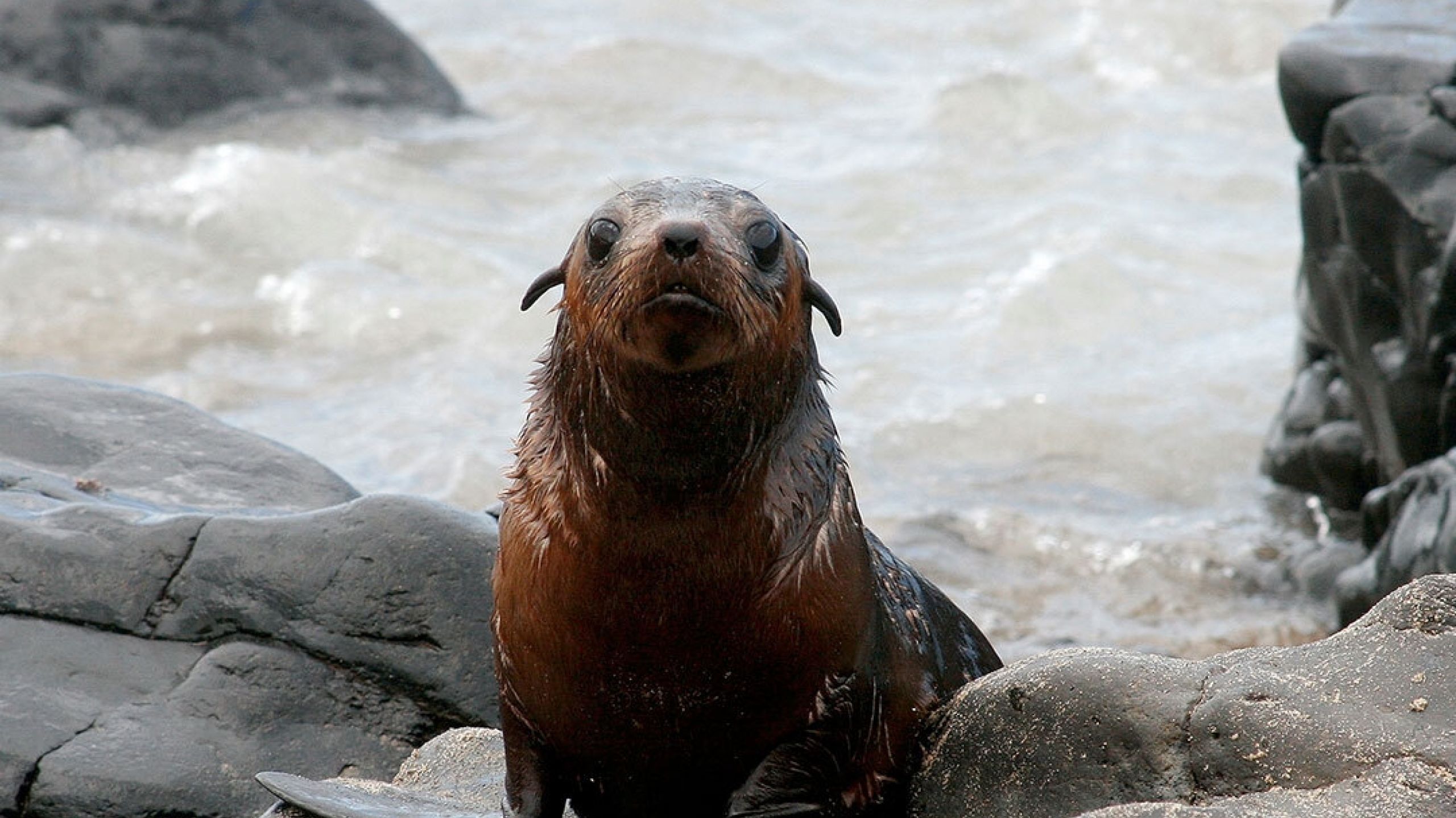Australian fur seals are the largest of eight species of fur seal in the world and reside in the coastal waters and oceans of Southern Australia. Seal Rocks, off Phillip Island, is a critically important breeding habitat for Australia's fur seal population.
Pups and juveniles are often seen splashing and playing with each other in the rock pools and shallows learning skills of survival and independence. Seals are considered marine sentinels, meaning their health can signal early warnings of existing or emerging threats to entire ocean ecosystems, such as climate change and pollutants, which ultimately affect human health.
Given this, it is critically important for marine scientists to conduct research on the future implications of threats to Phillip Island's Australian fur seal population and marine ecosystem. These threats include commercial fishing, toxic pollutants, entanglement in marine debris, ingestion of marine plastic, loss of breeding habitat due to sea-level rise from climate change, and potential disturbances from boat and jet ski visitation.
-
Arctocephalus pusillus doriferus
-
Mammalia
-
Population stable
-
15–20 years
-
110 - 360kgs
-
125–225cm
Did you know?
Australian Fur Seals can dive up to 500m deep in search of fish.
What your money helps fund
Research and Monitoring
Phillip Island Nature Parks conducts ongoing scientific research studies and monitoring activities to better understand the implications of local and global threats to fur seals and protect them well into the future.
Technology
Phillip Island Nature Parks utilises drone technologies to capture and analyse images of the Australian fur seal colony on Seal Rocks, in the most hands-off way.
Debris Disentangling
Phillip Island Nature Parks seal biologist and rangers visit Seal Rocks multiple times each year to disentangle seals from marine debris, after spotting them in images captured by the drones.
Did you know?
Australian Fur Seals are otariids (eared seals), meaning they have tiny external ears unlike phocids (true seals) who do not have ears.



